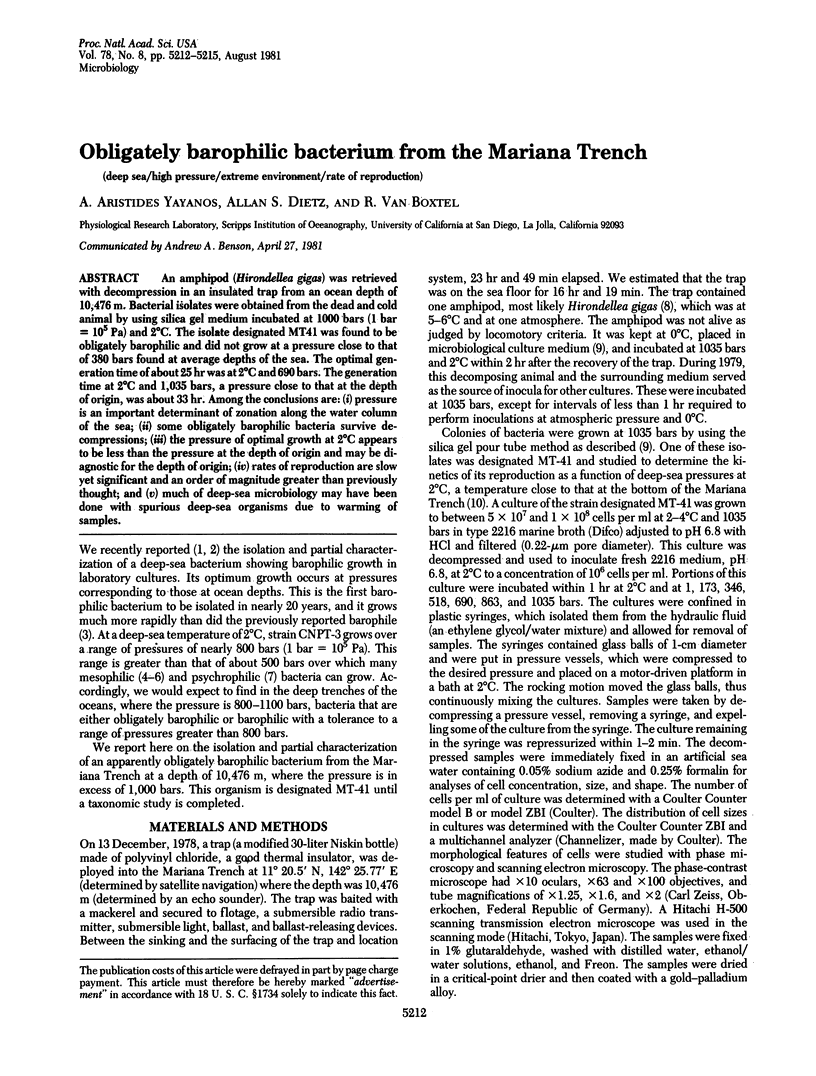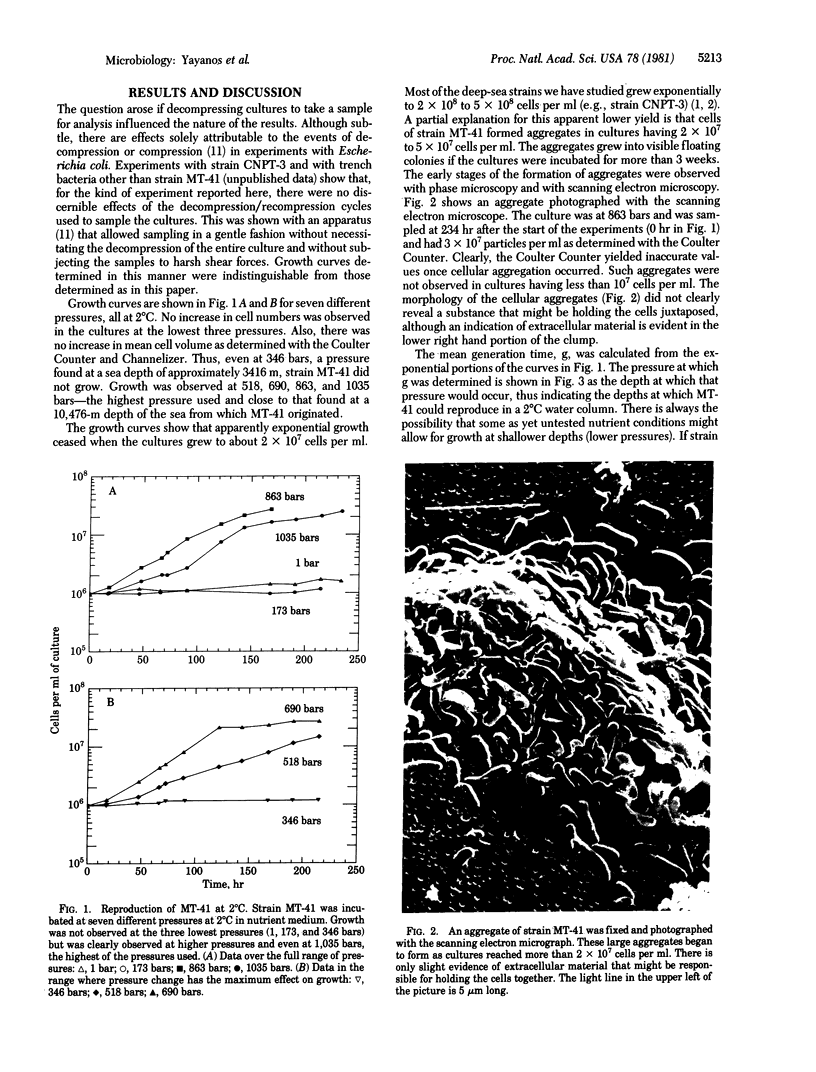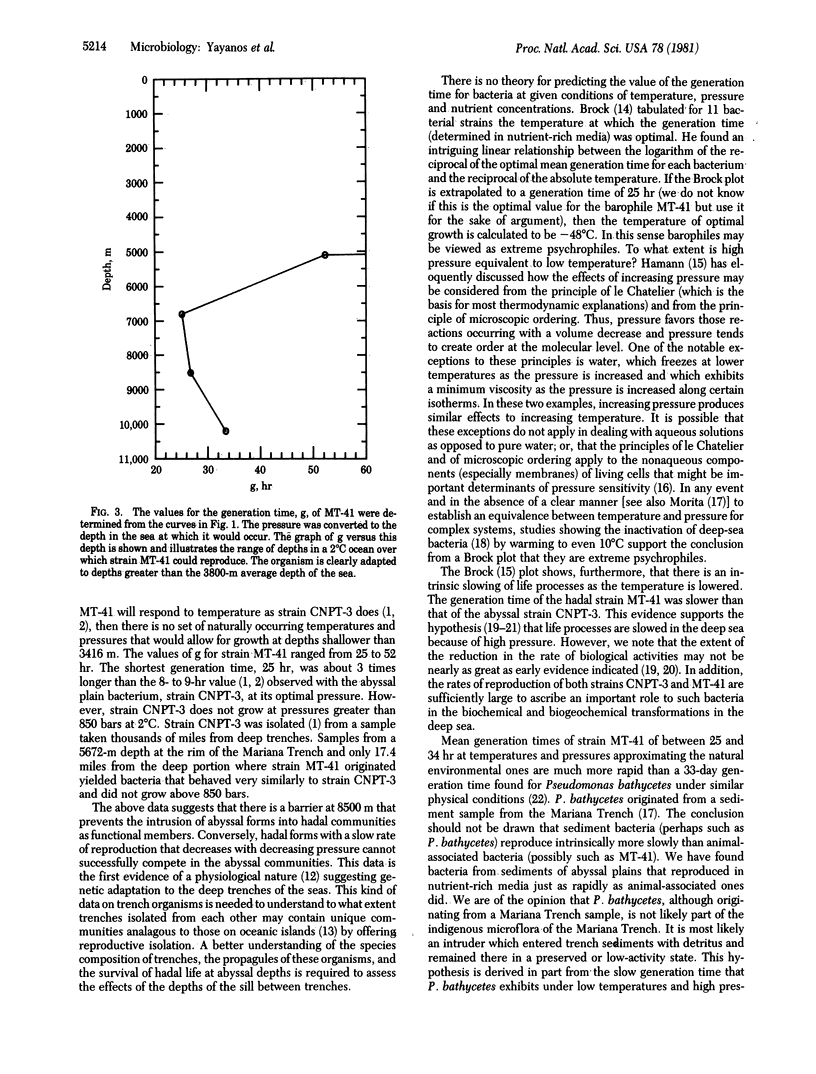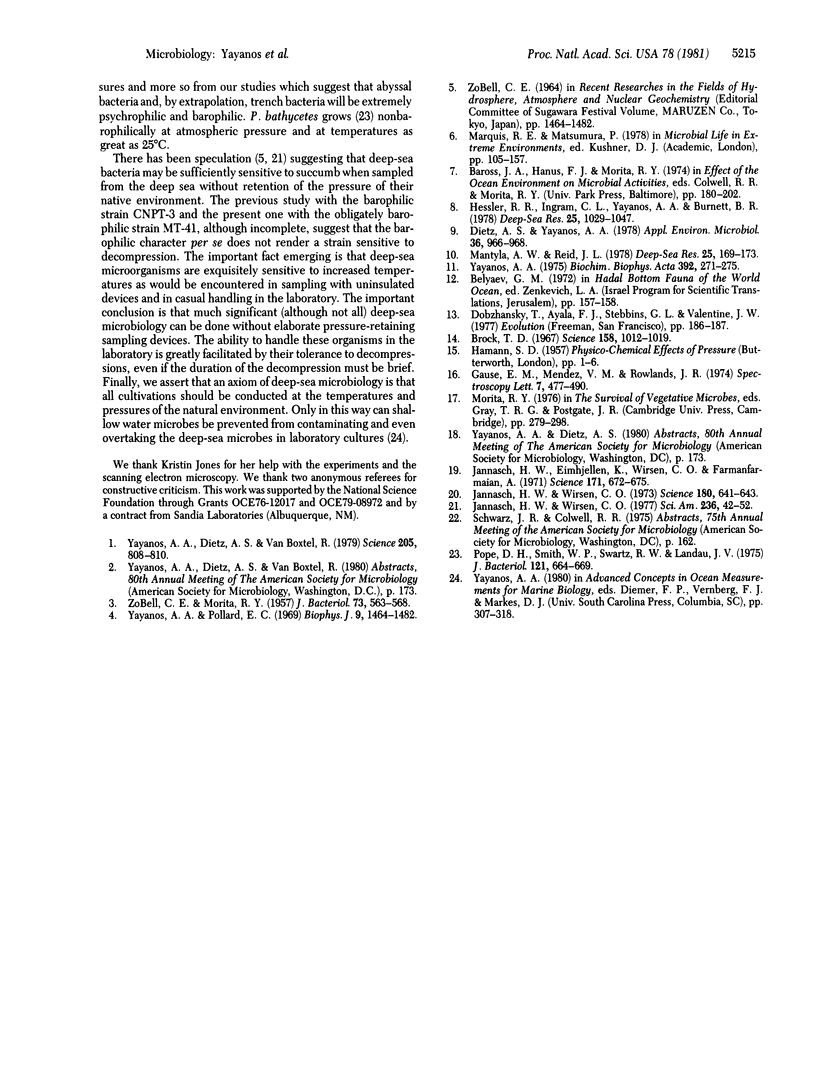Abstract
An amphipod (Hirondellea gigas) was retrieved with decompression in an insulated trap from an ocean depth of 10,476 m. Bacterial isolates were obtained from the dead and cold animal by using silica gel medium incubated at 1000 bars (1 bar = 10(5) Pa) and 2 degrees C. The isolate designated MT41 was found to be obligately barophilic and did not grow at a pressure close to that of 380 bars found at average depths of the sea. The optimal generation time of about 25 hr was at 2 degrees C and 690 bars. The generation time at 2 degrees C and 1,035 bars, a pressure close to that at the depth of origin, was about 33 hr. Among the conclusions are: (i) pressure is an important determinant of zonation along the water column of the sea; (ii) some obligately barophilic bacteria survive decompressions; (iii) the pressure of optimal growth at 2 degrees C appears to be less than the pressure at the depth of origin and may be diagnostic for the depth of origin; (iv) rates of reproduction are slow yet significant and an order of magnitude greater than previously thought; and (v) much of deep-sea microbiology may have been done with spurious deep-sea organisms due to warming of samples.
Full text
PDF



Images in this article
Selected References
These references are in PubMed. This may not be the complete list of references from this article.
- Brock T. D. Life at high temperatures. Evolutionary, ecological, and biochemical significance of organisms living in hot springs is discussed. Science. 1967 Nov;158(3804):1012–1019. doi: 10.1126/science.158.3804.1012. [DOI] [PubMed] [Google Scholar]
- Dietz A. S., Yayanos A. A. Silica gel media for isolating and studying bacteria under hydrostatic pressure. Appl Environ Microbiol. 1978 Dec;36(6):966–968. doi: 10.1128/aem.36.6.966-968.1978. [DOI] [PMC free article] [PubMed] [Google Scholar]
- Jannasch H. W., Eimhjellen K., Wirsen C. O., Farmanfarmaian A. Microbial degradation of organic matter in the deep sea. Science. 1971 Feb 19;171(3972):672–675. doi: 10.1126/science.171.3972.672. [DOI] [PubMed] [Google Scholar]
- Jannasch H. W., Wirsen C. O. Deep-Sea Microorganisms: In situ Response to Nutrient Enrichment. Science. 1973 May 11;180(4086):641–643. doi: 10.1126/science.180.4086.641. [DOI] [PubMed] [Google Scholar]
- Jannasch H. W., Wirsen C. O. Microbial life in the deep sea. Sci Am. 1977 Jun;236(6):42–52. doi: 10.1038/scientificamerican0677-42. [DOI] [PubMed] [Google Scholar]
- Pope D. H., Smith W. P., Swartz R. W., Landau J. V. Role of bacterial ribosomes in barotolerance. J Bacteriol. 1975 Feb;121(2):664–669. doi: 10.1128/jb.121.2.664-669.1975. [DOI] [PMC free article] [PubMed] [Google Scholar]
- Reid B. J., Cheesbrough M. J. Multiple keratoacanthomata. A unique case and review of the current classification. Acta Derm Venereol. 1978;58(2):169–173. [PubMed] [Google Scholar]
- Yayanos A. A., Dietz A. S., VAN Boxtel R. Isolation of a deep-sea barophilic bacterium and some of its growth characteristics. Science. 1979 Aug 24;205(4408):808–810. doi: 10.1126/science.205.4408.808. [DOI] [PubMed] [Google Scholar]
- Yayanos A. A., Pollard E. C. A study of the effects of hydrostatic pressure on macromolecular synthesis in Escherichia coli. Biophys J. 1969 Dec;9(12):1464–1482. doi: 10.1016/S0006-3495(69)86466-0. [DOI] [PMC free article] [PubMed] [Google Scholar]
- Yayanos A. A. Stimulatory effect of hydrostatic pressure on cell division in cultures of Escherichia coli. Biochim Biophys Acta. 1975 Jun 12;392(2):271–275. doi: 10.1016/0304-4165(75)90008-2. [DOI] [PubMed] [Google Scholar]
- ZOBELL C. E., MORITA R. Y. Barophilic bacteria in some deep sea sediments. J Bacteriol. 1957 Apr;73(4):563–568. doi: 10.1128/jb.73.4.563-568.1957. [DOI] [PMC free article] [PubMed] [Google Scholar]



